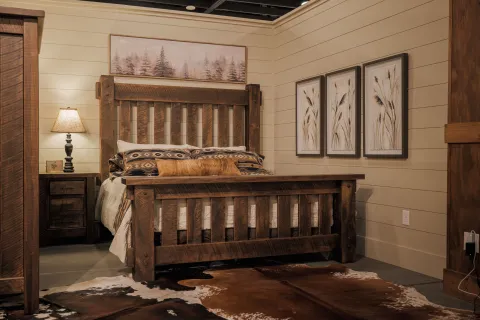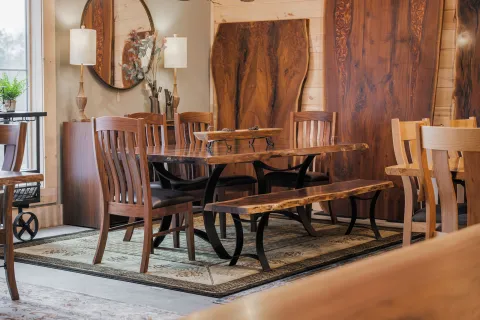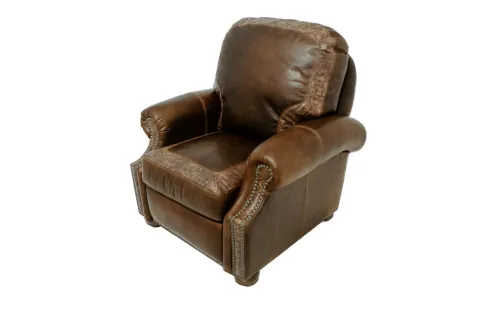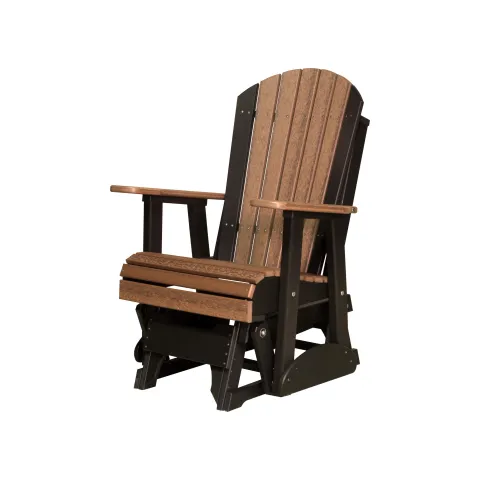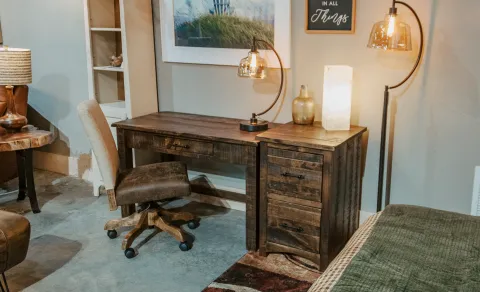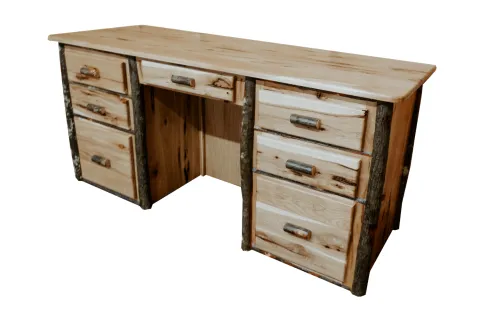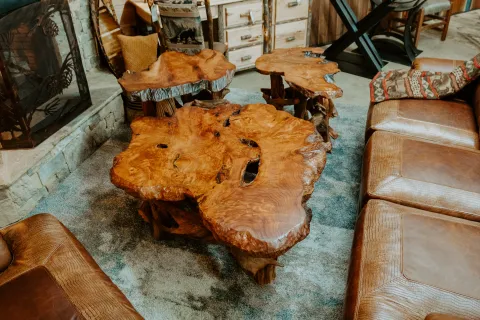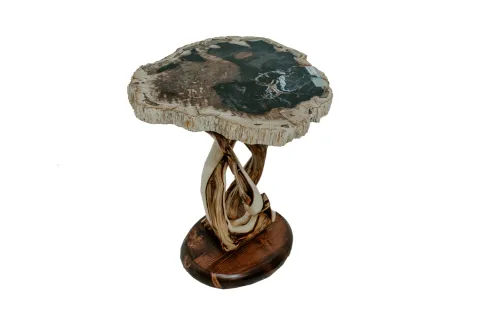Wood: What You Need To Know
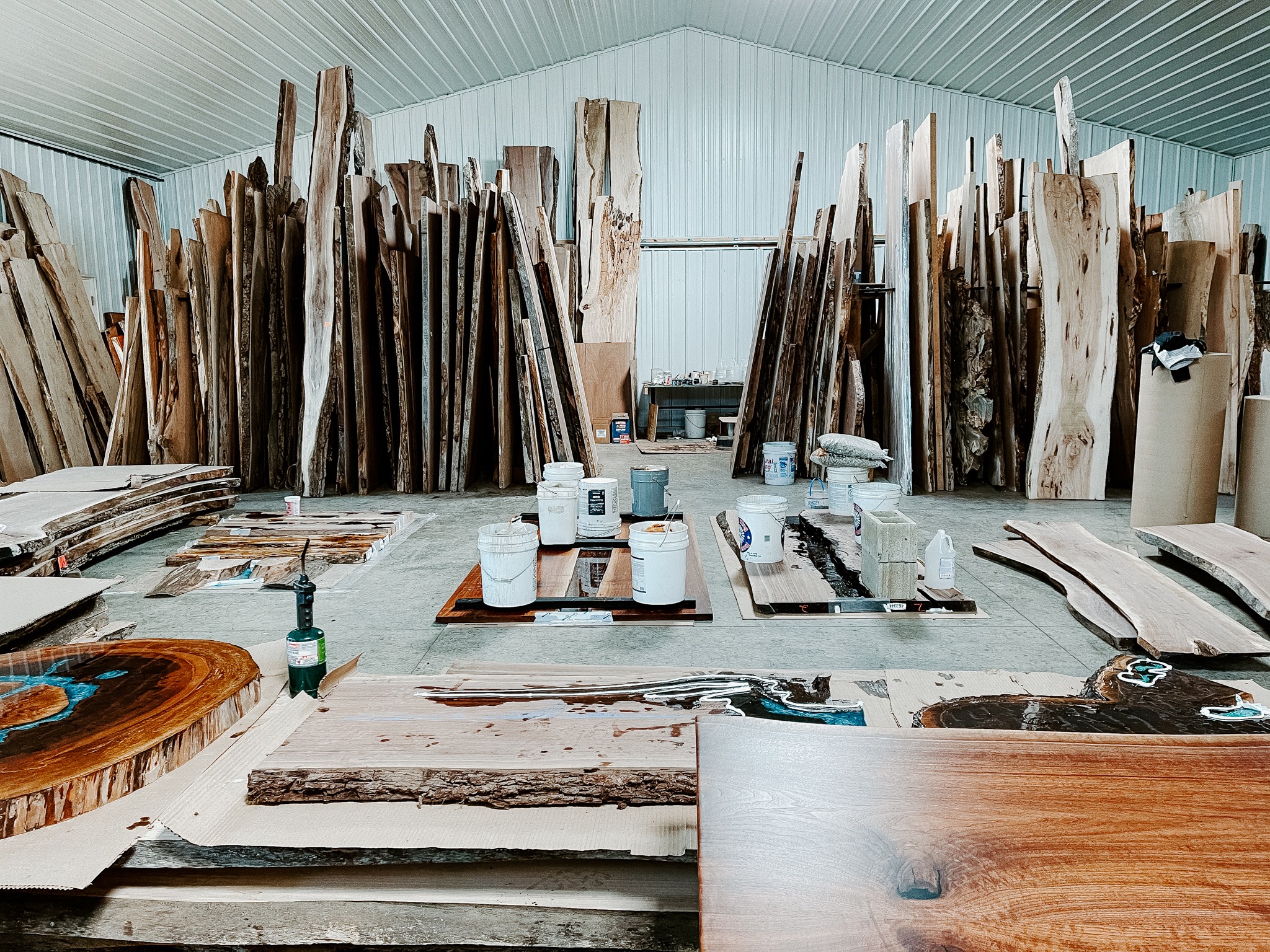
Shopping for wood furniture can feel overwhelming. We'd like to help by offering up some information to know before you buy.
Worried about dents and scratches? Learn about the different hardnesses of each wood type so you can make the best selection for your piece.
Janka Hardness Scale
The Janka hardness test is a measure of the force required to embed a .44-inch steel ball to half its diameter into a piece of wood. It is one of the most common ways to test the strength and wear of hardwood flooring. The higher the Janka score, the harder the particular species of the wood is.
Woods We'll Cover
-
Red Oak
-
Quarter Sawn White Oak
-
Cherry
-
Hard Maple
- Hickory
-
Black Walnut
-
Soft Maple (Brown Maple)
-
Cedar
Amish Furniture Red Oak
Red Oak is readily available in the US and Canada. It is the most widely used of the hardwood trees. These trees often lose their leaves in the winter and can grow to heights of 100'. Red Oak is often plain sawn giving it an open grain pattern. There are multiple trees that fall into the Red Oak category, one of them is Black Oak. These woods have a reddish grain pattern and are graded and sold under the name “Red Oak”.
Plain sawn Red Oak can be identified by the wide, flowing ring patterns. The annual rings are black in color. They also “indent” into the wood. Run your hand across the black rings and you will notice that area is a bit rougher. Amish furniture plain sawn cuts can also be identified, on any board, by looking at the end grain pattern.
Janka Hardness scale: 1290
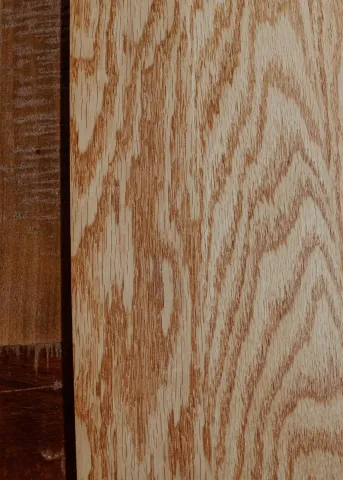
Amish Furniture Quarter Sawn White Oak
White Oak is native to the entire eastern half of the United States. Its wood is a light-colored beige that is almost white when freshly cut; hence its common name.
Amish furniture craftsmen like to use Quarter Sawn White Oak. The large trees produce wide planks that have outstanding grain patterns. Quarter Sawn wood is very stable and White Oak has a natural tendency not to rot or decay. This wood is very stable and resists cupping, twisting and cracking when finished properly.
*Amish furniture craftsmen recommend using Quarter Sawn Oak if you live in a high moisture area because the close grain of the wood is very stable.
Janka Hardness Scale: 1335

What is Quarter-Sawn Lumber?
Technically, quarter-sawn lumber has the growth rings of the tree approximately perpendicular to the board's broad face. In contrast, plain-sawn lumber has the growth rings parallel to the board's broad face. Quarter-sawn produces both quartered and rift lumber.
How is Quarter-Sawn Lumber Achieved?
There is only one true way to quarter saw a log. First, Amish furniture craftsmen cut a log into quarters. Each quarter is then processed by cutting a single board off of one face, then cutting the next board from the opposite face, and cutting from alternating faces until the quarter is completely cut.
What are the Aesthetic Qualities of Quarter-Sawn Lumber?
The most notable characteristic of quarter-sawn lumber lies in its incomparable grain patterns. Medullary ray fleck, wavy grain and interlocked grain are all visually enhanced when the log is quarter-sawn. The revival of mission style furniture is just one example of how today's Amish furniture craftsmen are re-discovering the unique beauty of quarter-sawn lumber. Today's Amish heirloom furniture, the antiques of tomorrow, is crafted from quarter-sawn lumber. Quality reproductions and renovations of artisans' work demand true quarter-sawn lumber. Quarter-sawn wood is the choice of Amish furniture craftsmen.
What are the Structural Qualities of Quarter-Sawn Lumber?
Quarter-sawn lumber is the uncontested winner when compared to plain or flat-sawn lumber. Quarter-sawn features include:
• Reduced shrinking and swelling in lumber width
• Reduced twisting, warping and cupping
• Less prone to surface checking
• Does not allow liquids to readily pass through it
• Smooth surface as raised grain is not pronounced
What's the Difference Between Quartered and Rift Lumber?
A quartered board features medullary ray or "fleck" perpendicular to a grain which typically forms angles from 60 degrees to 90 degrees with the board's surface. A rift board exhibits a clean, straight, vertical grain pattern which typically forms angles from 30 to 60 degrees with the board's surface.
Is There a Cost Difference Between Quartered Lumber and Plain-Sawn Lumber?
Quarter sawing is a specialized technique requiring more time and greater skill to produce. Logically, lumber prices are slightly higher than plain sawn. However, rustic quarter sawn boards can be used at the same cost as plain sawn lumber. This is an excellent choice if you want the quality of quarter-sawn lumber, and desire more rustic character such as knots and other minor 'imperfections' in the wood.
If Quarter Sawing is So Good, Why Don't All Sawmills do it?
For most, the art of quarter sawing solid wood for furniture has been lost over the years, except for Amish Furniture craftsmen. Like many superior practices of the past, quarter sawing lost favor to plain sawing techniques. Plain sawing is easier, cheaper, and quicker, but it results in more waste, less grain characteristic and less stable lumber.
Amish Furniture Cherry
Cherry used in Amish furniture is actually called Black Cherry. Cherry is a fine hardwood, but is the softest of the woods the Amish use.
Many companies use other similar grained woods that are cheaper, then stain the wood to look like cherry. They then try to sell it for a higher price. Amish Craftsmen only use 100% solid cherry and never cut corners trying to mimic its appearance.
Buyers note: As you get closer to the outside bark area of a cherry tree the wood will quickly turn from a reddish color to an off yellow color. Many Amish like to use boards like this because it gives character to the furniture. Properly laid out boards give a natural beauty to the piece, thus showing the Amish woodworker's eye for perfection.
Being a rapidly growing woodland tree common throughout all of Ohio, Cherry is often found in open fields and previously harvested forests. Its beautiful, fine-grained, orange-brown to mahogany-colored heartwood ranks second only to Black Walnut as the ultimate choice for making Amish solid wood furniture. This tree is named for its ripened black cherries as well as its black-gray, flaky mature bark, which looks like black cornflakes pasted on the trunk of the tree.
A native of eastern and midwestern North America, Black Cherry is a pioneer invader tree in open fields or woodlots, and as such can become a "woody weed" as an aggressive sapling. In youth, it displays a symmetrical, often pyramidal growth habit, but it often divides into several upright branches due to storm damage and assumes an irregular shape as it matures.
Janka Hardness Scale: 950
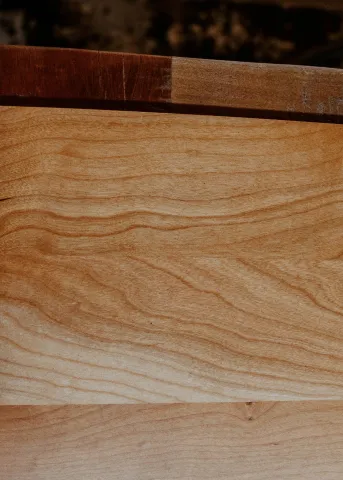
How do you identify Cherry?
To the untrained eye it can be difficult to tell if the wood is truly cherry. We teach clients to look for a black grain pattern and a “bit of white” mixed into the wood. These “white” areas are actually the outer edge of the tree.
Be aware that Cherry “naturally darkens” in sunlight.
Cherry that is used in Amish furniture was most likely just built. This wood is actually more “pink” and if sprayed with a natural finish, or clear coat of conversion varnish, it will take up to 6 months to naturally darken to a darker, reddish golden color.
Consumer note: DO NOT place anything on a piece of cherry furniture, in a permanent manner, for 6 months. This means decorations, placemats, etc. The sun will not darken the area evenly and you will be left with the shape of the item in a lighter color. The wise consumer will place the extra cherry table leaves in the table so they will darken evenly with the rest of the table.
Amish Furniture Hard Maple
Hard, or “rock” Maple is a light colored wood that is much harder than cherry. Often referred to as “maple”, this wood has a Janka hardness scale of 1450, and is second in hardness to Hickory. Maple boards have black growth rings and distinct light color.
Found in the forests and meadows throughout all of Ohio’s Amish Country, maple flourishing in the cooler climates and more acidic soils of northeastern Ohio and Appalachia. It is valued for its hard, dense, fine-grained and difficult-to-split wood, which is utilized for floors, Amish furniture, veneer, musical instruments, and railroad ties.
Janka Hardness Scale: 1450
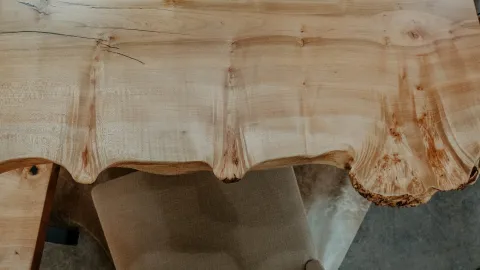
Amish Furniture Hickory
Hickory is a very popular wood choice for Amish Furniture. Clients love the contrasting color patterns when sprayed clear that are not found in today’s mass produced furniture. It takes a skilled eye to glue together wood patterns that are pleasing to the eye and give each piece of Amish furniture a unique look.
Hickory is the hardest wood Amish Craftsmen currently use. Hickory furniture is very heavy and will last many generations if properly cared for.
Janka Hardness Scale: 1820
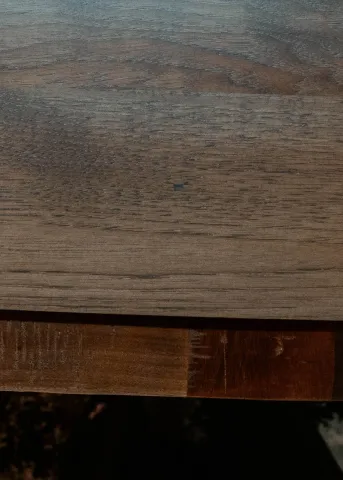
Amish Furniture Black Walnut
Although black walnut is the finest of hardwoods to build Amish solid wood furniture from, it is in such high demand for Amish furniture that it can be hard to find and expensive.
Its beautiful, fine-grained, chocolate-brown, relatively lightweight heartwood is the ultimate choice for making solid wood Amish furniture, interior trim, gunstocks, and high-quality veneer.
A native of the Eastern, Midwestern, and Great Plains regions of the United States, Black Walnut is a pioneer invader tree in open fields or cut-over woodlots, and grows rapidly in youth. A rapidly growing tree is most common in moist bottomlands and open fields, but is found everywhere due to squirrels burying its nuts.
Because of its unique color variation, we never stain black walnut. Expect a clear coat that will show through natural color tones varying from greenish blue hues to purple or red hues in the rich, brown wood.
Janka Hardness Scale: 1010
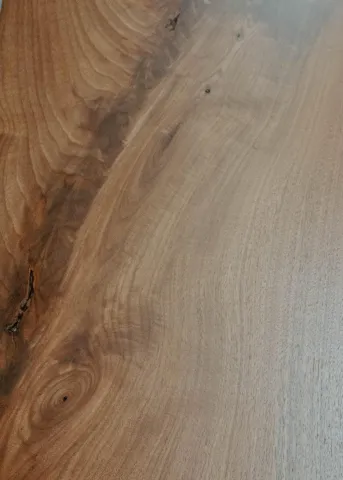
Brown Maple/Soft Maple
Soft maple is a lumber term, not species of tree. This normally refers to the cousin of the hard maple tree. Amish craftsmen often use soft, or brown maple as many Amish refer to it, for paint grade pieces. This wood is about 25% softer than hard maple and places it in the category of cherry and walnut. The wood is usually straight grained and smooth. Amish furniture craftsmen are using brown maple in their solid wood furniture. Amish craftsmen are using modern day dye stain techniques to give the wood a different look. Brown maple's even, soft grain allows for a cohesive look and even stain.
Consumer note: Amish like to use soft maple for their painted and dye stained furniture.. The lower cost of the wood and saves the consumer money. The smooth grain pattern takes the paint very well giving a smooth, rich finish.
Janka Hardness Scale: 950
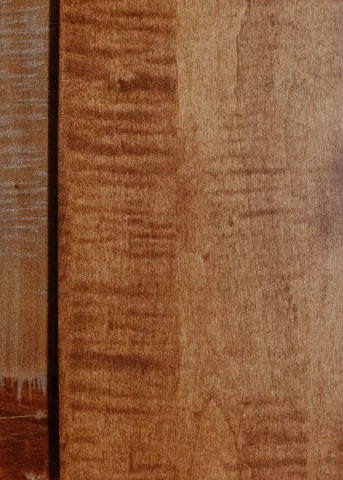
Amish Furniture Cedar
While also known as Cedar or Red cedar, this species is actually a type of Juniper, reaching a height of 30 feet and width of 15 feet when found in the open, although it is spire-like in youth. Its aromatic heartwood is lavender-red in color, and is prized for making Amish cedar chests, closet wood lining, cedar shavings, and small Amish carvings.
Many Amish furniture craftsmen that use Cedar for their log style furniture often spray a clear finish over the wood to protect it.
Janka Hardness Scale: 350
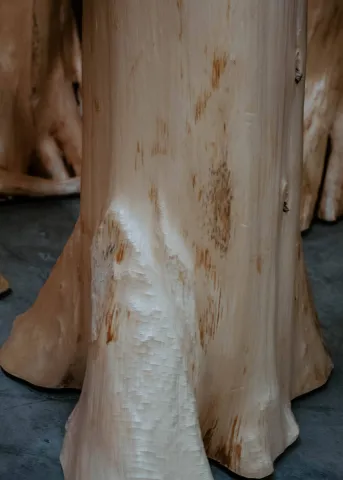
Wood Characteristics:
Amish Furniture Cupping
Cupping refers to when a board’s edges start to curl up or down relative to the center of the board
This is caused by an imbalance of moisture in the wood. Your best reference of cupping may be your deck. Because the board is exposed to constant sun, wet, cold, and hot conditions on the exposed side of the board, and very little sunlight and moisture on the bottom, the board "cups".
This allows more moisture to sit on top of the board because the sides are higher than the center, thus creating more problems.
What to do about wood cupping?
Amish furniture craftsmen are aware of the problem and take steps to prevent cupping. First, they glue boards with the grain patters going opposite directions. They also seal the top AND the bottom of the boards. This limits the amount of moisture that can penetrate the wood. The client must also do their part by keeping moisture off the wood and if it’s outdoor Amish furniture they should use a wood sealer.
Amish Furniture Splitting
One of the challenges of solid wood furniture is controlling the wood from splitting.
Amish craftsmen work hard to prevent this from happening. The process actually starts when the log is cut. The ends of the log, which are shaped like little straws carrying nutrients through the tree, are more porous and easily shed moisture. This imbalance in the moisture content of the wood can cause splitting.
Splitting also occurs when the Amish craftsmen does not get enough glue on the seam of two boards. It should be noted that glue is actually stronger than the wood. Often a split or crack will form next to the glue joint, but not on the joint.
What to do?
The Amish have done most of the work for you by sealing the end grains with Conversion Varnish. This stops the flow of most moisture into the wood.
The consumer’s job is to limit the Amish furniture from direct sunlight. The sun is trying to dry the top of the wood faster than non exposed areas. The consumer must also control the humidity levels in the home. From summer to winter your home’s moisture will change. Your furniture was built to “move” with the changes by the Amish craftsman building floating panels in the doors, using screws to connect pieces were the grain patterns change direction, etc.
There is a tremendous amount of thinking, along with superior craftsmanship, that goes into each piece of Amish built furniture.
Swelling
Swelling occurs when the ambient moisture level in your home changes. This is often found during summer months in homes with no climate control (no air conditioning). The wood is constantly trying to stay balanced with the humidity level of the room. If the Amish furniture is not sprayed with a film finish (conversion varnish) the wood will take moisture until it balances with the humidity level of the room, causing swelling.
Consumer note: One place the wood swells is the solid wood leaves of dining tables. This is natural and will change through the seasons. This is not an Amish Craftsman defect, just nature taking it’s course.
Next Blog: "Design Your Traditional Dining"

